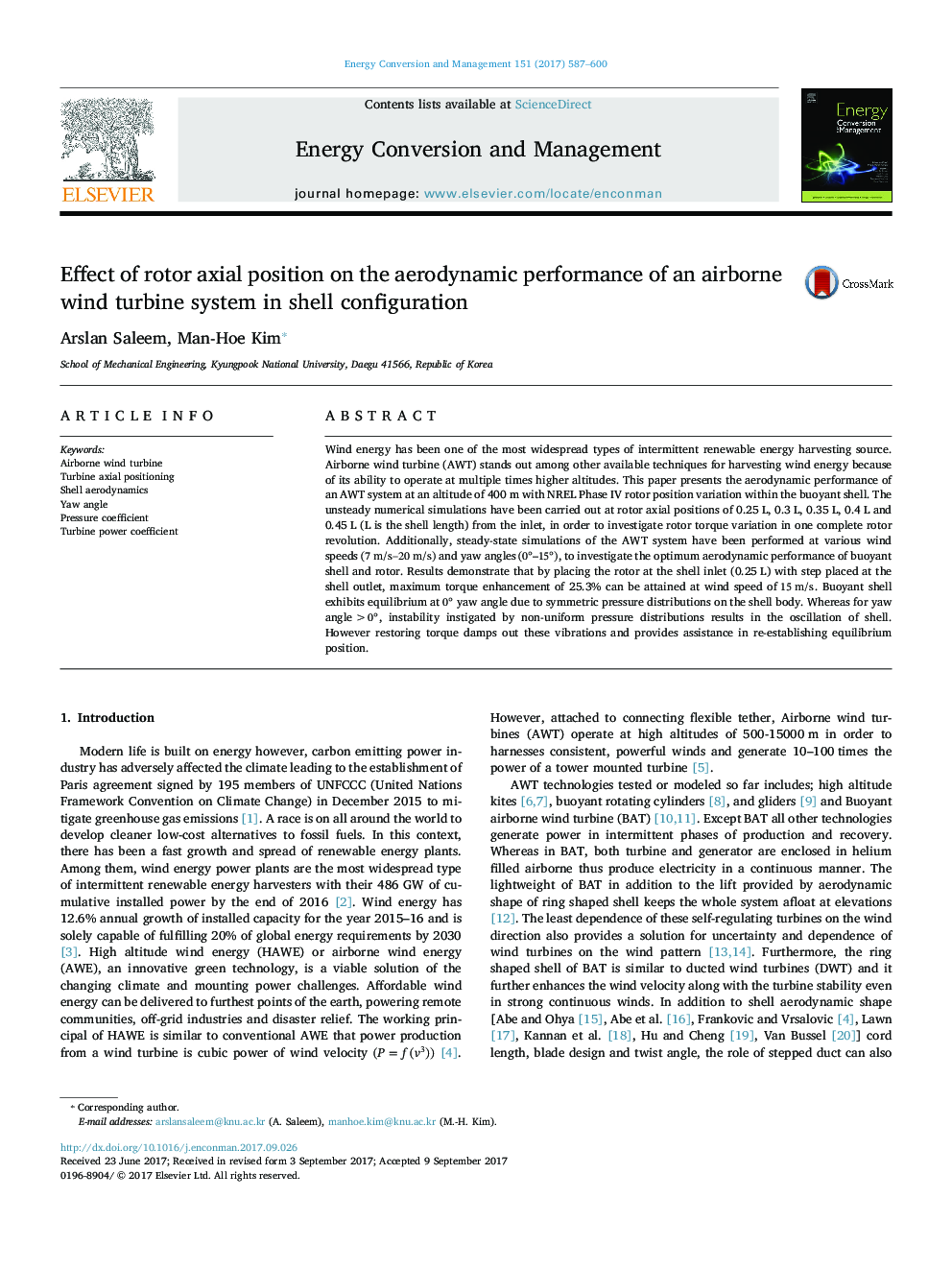| Article ID | Journal | Published Year | Pages | File Type |
|---|---|---|---|---|
| 7159772 | Energy Conversion and Management | 2017 | 14 Pages |
Abstract
Wind energy has been one of the most widespread types of intermittent renewable energy harvesting source. Airborne wind turbine (AWT) stands out among other available techniques for harvesting wind energy because of its ability to operate at multiple times higher altitudes. This paper presents the aerodynamic performance of an AWT system at an altitude of 400 m with NREL Phase IV rotor position variation within the buoyant shell. The unsteady numerical simulations have been carried out at rotor axial positions of 0.25 L, 0.3 L, 0.35 L, 0.4 L and 0.45 L (L is the shell length) from the inlet, in order to investigate rotor torque variation in one complete rotor revolution. Additionally, steady-state simulations of the AWT system have been performed at various wind speeds (7m/s-20m/s) and yaw angles (0°-15°), to investigate the optimum aerodynamic performance of buoyant shell and rotor. Results demonstrate that by placing the rotor at the shell inlet (0.25 L) with step placed at the shell outlet, maximum torque enhancement of 25.3% can be attained at wind speed of 15m/s. Buoyant shell exhibits equilibrium at 0° yaw angle due to symmetric pressure distributions on the shell body. Whereas for yaw angle >0°, instability instigated by non-uniform pressure distributions results in the oscillation of shell. However restoring torque damps out these vibrations and provides assistance in re-establishing equilibrium position.
Keywords
Related Topics
Physical Sciences and Engineering
Energy
Energy (General)
Authors
Arslan Saleem, Man-Hoe Kim,
